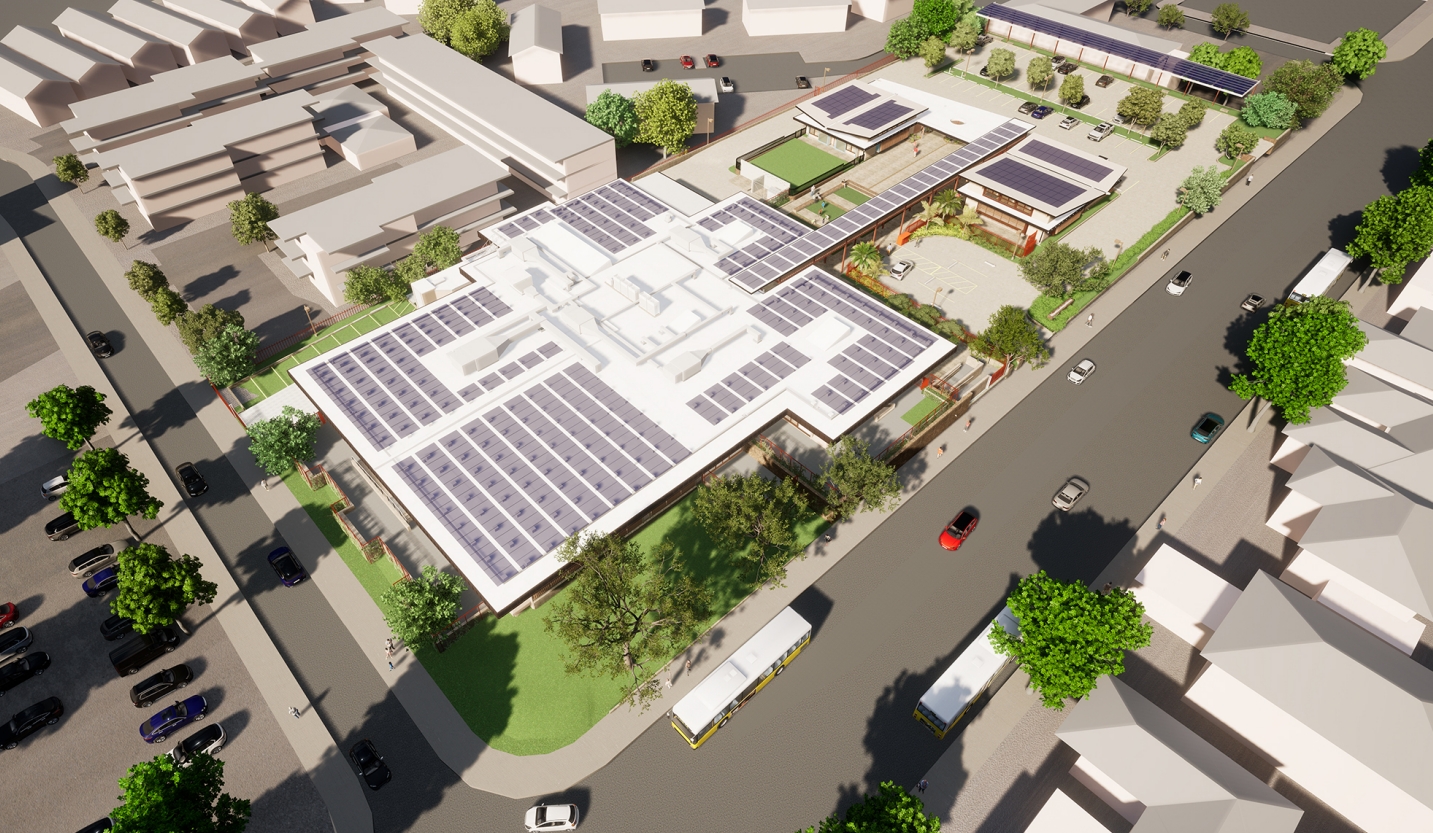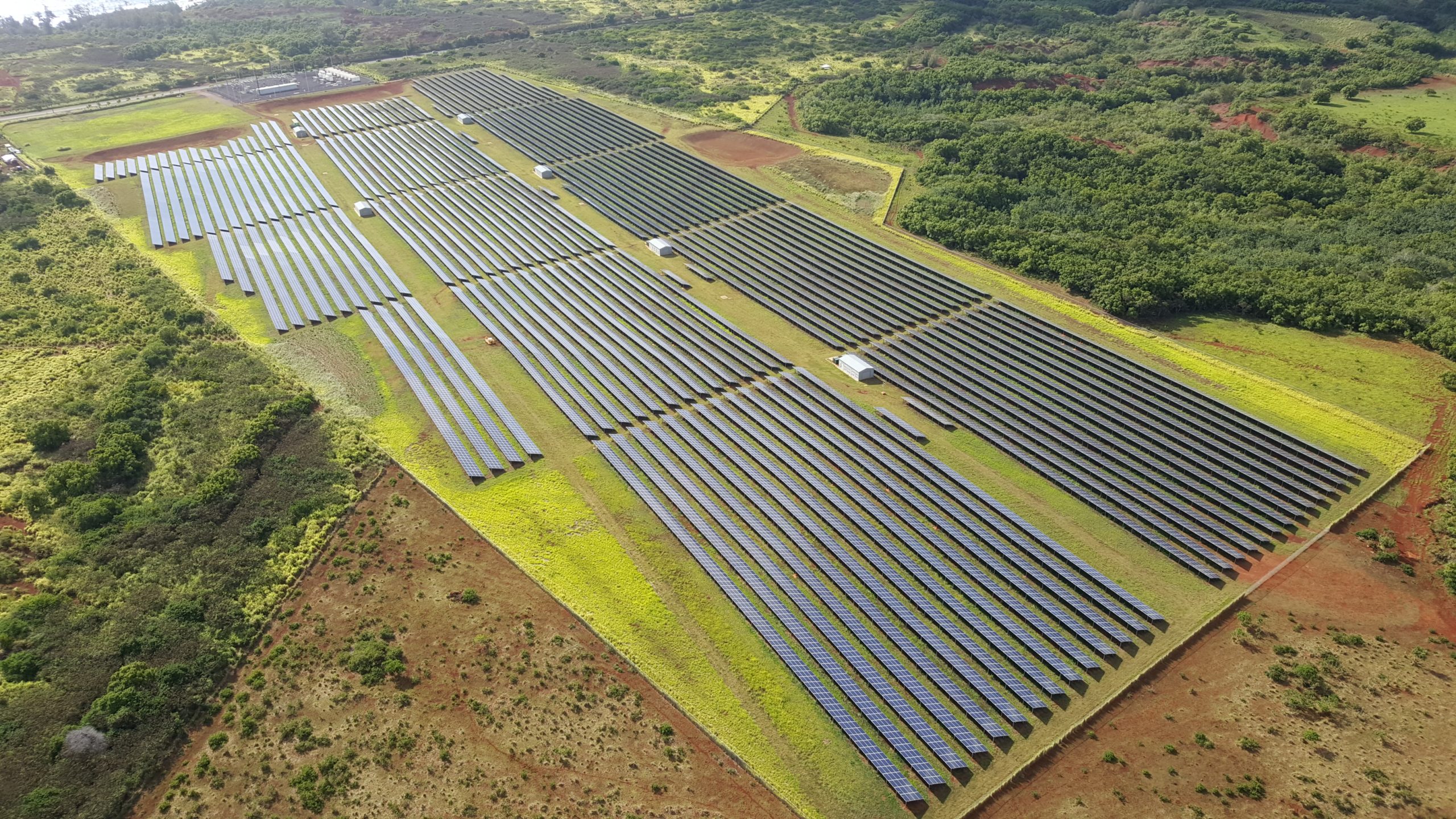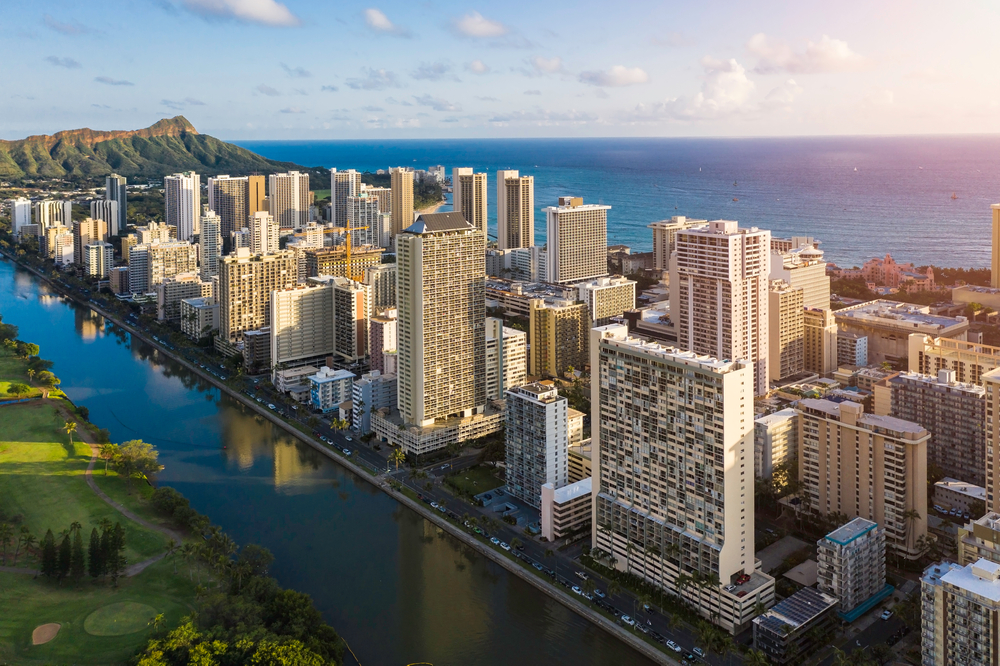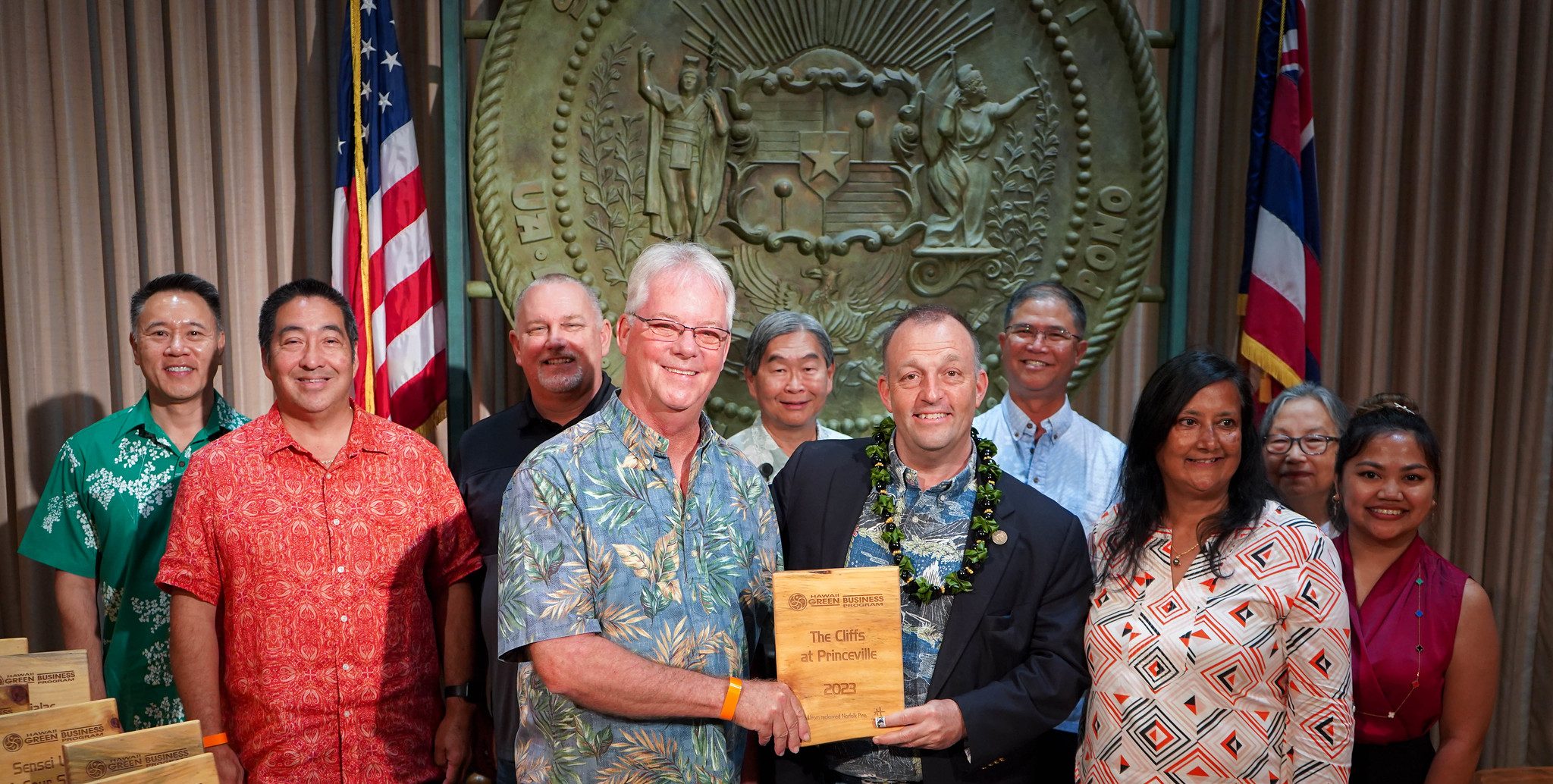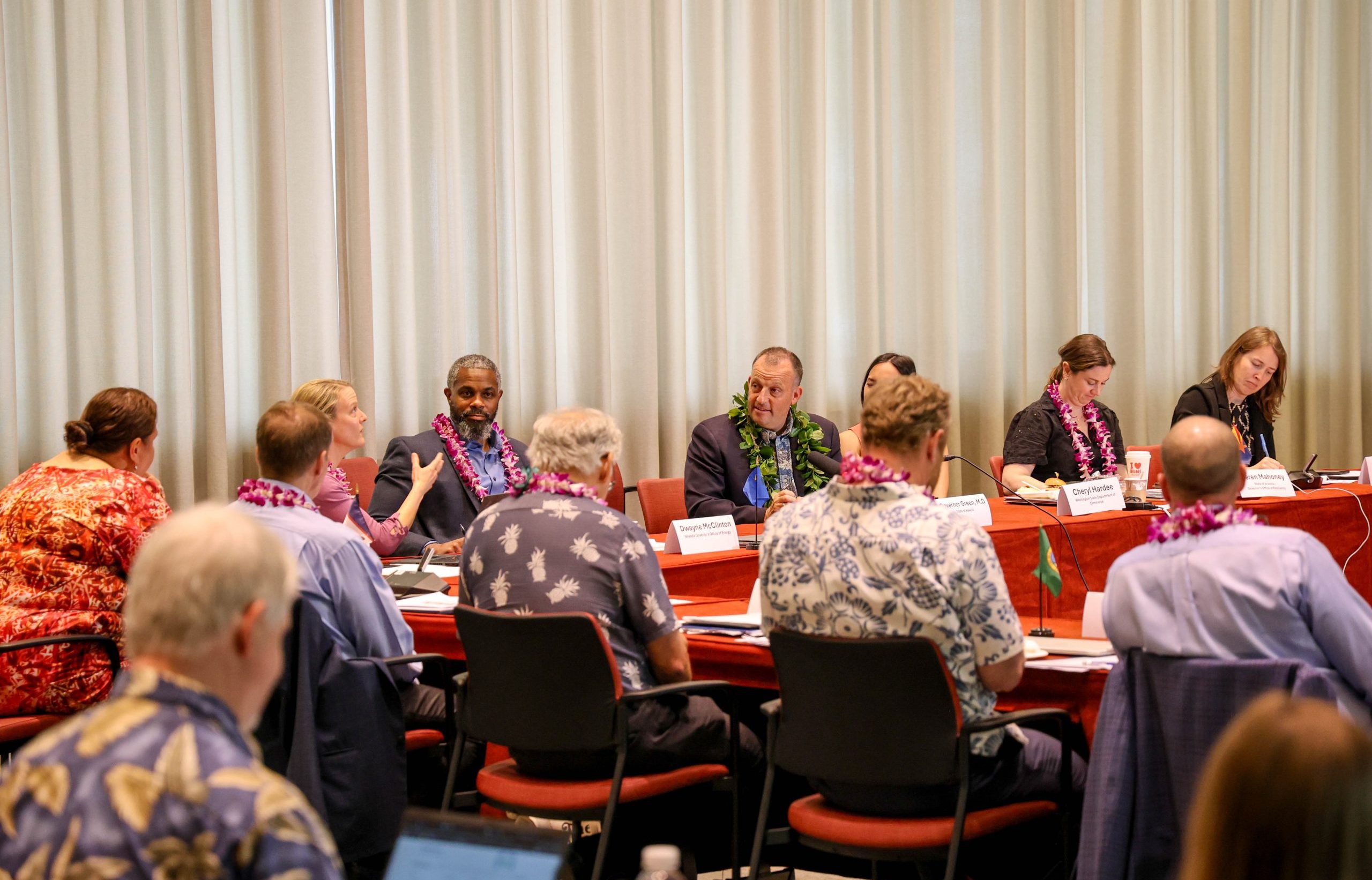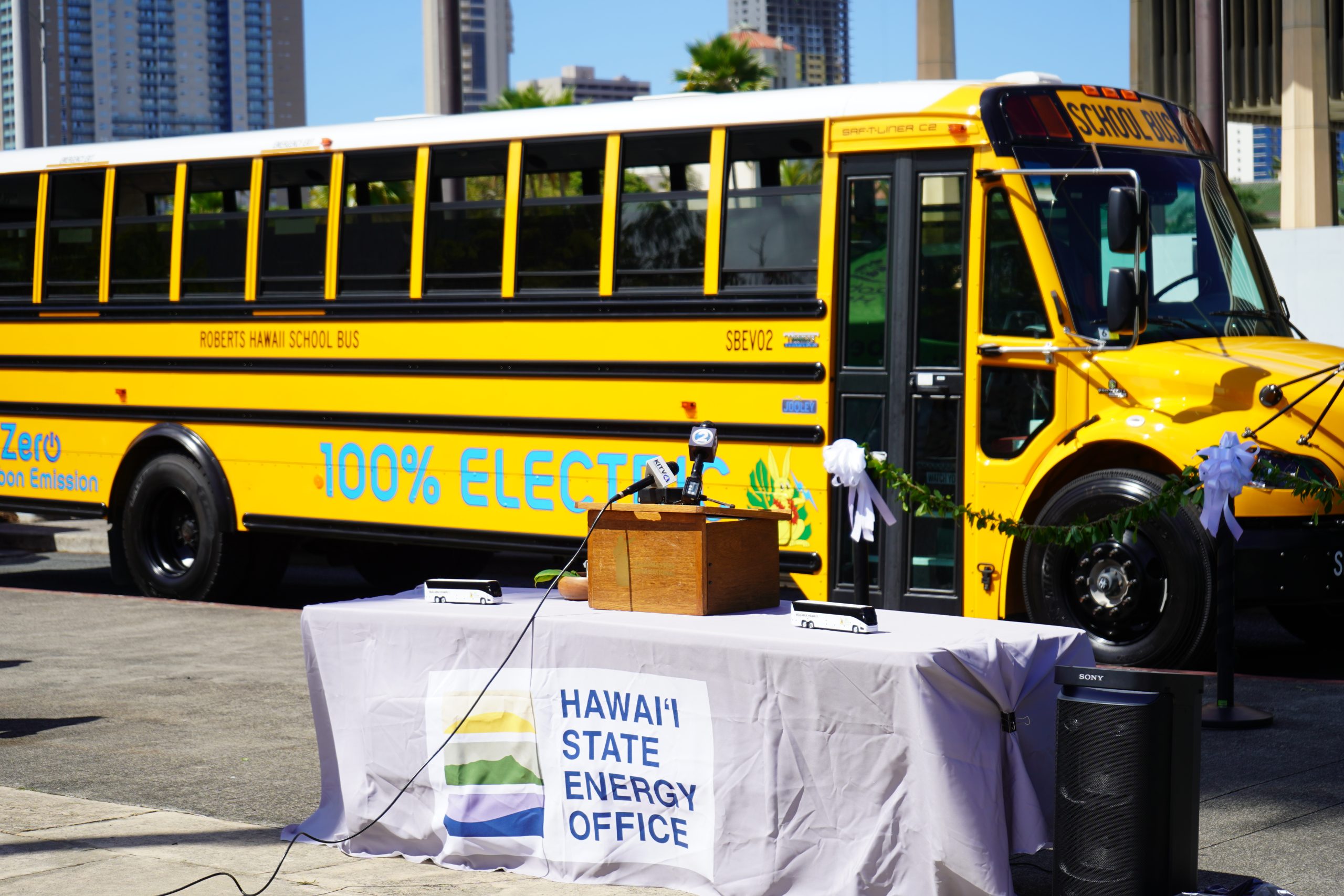2024/2025 HAWAI‘I GREEN BUSINESS AWARDS PROGRAM HONORS HAWAI‘I BUSINESSES AND EVENTS FOR SUSTAINABILITY PRACTICES
HONOLULU —The Hawai‘i Green Business Program (HGBP) recognized 45 Hawai‘i businesses and events today for their commitment to energy and water efficiency, waste reduction, pollution prevention and community involvement, as well as cultural and natural resource preservation.
The 45 awardees representing six islands were recognized during the annual HGBP awards ceremony at historical Washington Place. Hosted by the Hawai‘i State Energy Office, the Honolulu Board of Water Supply and Hawaiʻi Energy, the awards program showcases the businesses advancing Hawaiʻi’s clean energy and sustainability goals, emphasizing energy efficiency as a key solution in accelerating Hawaiʻi’s move to renewable energy.
Governor Josh Green, M.D., praised awardees for their commitment to sustain the ecological, cultural and economic health of Hawaiʻi, heralding lawmakers for the 2025 passage of the nation’s first climate impact fee to fund environmental stewardship and address the impacts of climate change.
Green said, “At a time when environmental protections are being repealed at the federal level, Hawaiʻi will not forfeit its commitment to a more resilient, clean economy. The businesses and organizations we recognize today honor a statewide commitment to malama ʻāina — to steward our precious natural resources for future generations.”
“Simply put,” said Hawai’i Chief Energy Officer Mark Glick, “using less energy means we need to generate less. These 45 businesses are among the best applying efficiency to our commercial building stock and energy efficient business practices make a profound difference.”
Newly appointed state director of energy efficiency and renewable energy Monique Zanfes concluded, “Many of the businesses in this room rely on Hawai‘i’s natural resources not just for operations, but as the foundation of what draws people here. Protecting these resources isn’t just the right thing to do — it’s essential to the long-term viability and health of Hawai‘i. I thank them for leading by example.”
The honorees of this year’s Hawai‘i Green Business Program Awards are:
Green Hotels, Resorts, Venue and Office Awardees:
- Ala Moana Hotel by Mantra
- Halekulani
- Halepuna Waikiki
- Hokulani, a Hilton Grand Vacations Club
- The Kahala Hotel & Resort
- Marriott’s Ko Olina Beach Club
- Prince Waikiki
- Kings’ Land, a Hilton Grand Vacations Club
- Maui Bay Villas, a Hilton Grand Vacations Club
- The Cliffs at Princeville
- Four Seasons Resort O‘ahu at Ko Olina
- Four Seasons Resort Maui at Wailea
- Four Seasons Resort Lānaʻi
- Sensei Lānaʻi, A Four Seasons Resort
- Hawai‘i Convention Center
- Waialae Country Club
- Honeywell International/Smart Energy
- Coradorables Sustainable Corporation
Green Event Awardees:
- 2024 Hawai‘i Library Association/HASL HLA Conference
- 2024 Sony Open
- Artist Waltz
- Green Business Engagement National Network – 7th National GBENN Summit
- Sentry 2024 Golf Tournament of Champions / PGA Tour
Entry Level Program Awardees:
- Coconut Ave
- Drip Studio
- The Fresh Shave
- Hoku Foods Natural Market
- Kilauea Bakery
- Lady Elaine
- Leong’s Road House
- Little Plum
- Uncle Paul’s Corner Store
- Maui Juice Co.
- Morning Glass Coffee
- Pele’s Kitchen
- Pu‘u O Hōkū Ranch
- Sweet Cane Café
- The Locavore Store
- Oko‘a Farms Produce
- Hanalei Spirits Distillery
- Kaua‘i Island Brewing Co.
- Kona Brewing Company
- Lanikai Brewing Co.
- Maui Brewing Company
- Waikulu Distillery
For further information please visit Hawaii Green Business Program.
In one year, the energy efficiency measures of the above businesses resulted in 38.8 million gallons of water saved, 6.5 million kWh of electricity saved, 22.7 tons of green waste diverted, 12,372 tons of waste recycled,119,110 therms (1 therm = 100,000 BTUs) of gas saved, 6,725 metric tons of CO2 equivalent for electricity kWh reduced and 945 metric tons of CO2 equivalent for gas reduced.
THE 2024/2025 Green Business Awards is livestreamed on the HSEO FB page at Hawaiʻi State Energy Office | Facebook Press kits for 2024/2025 awardees can be found at Hawaiʻi Green Business Program.
You can find the images by clicking here: 6.27.25 Hawaii Green Business Awards | Flickr


